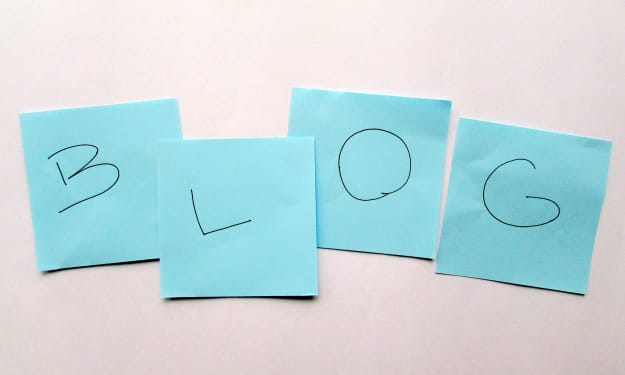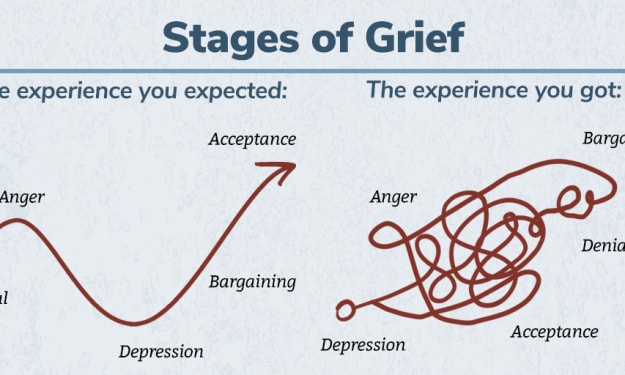5 Rules for Submitting to Literary Magazines
Getting published is an uphill battle. Here are some guidelines to make it easier.

So you've written something; congratulations! You have produced something beautiful from nothing, and you're now ready to share it with the world.
So... what now?
Well, now it's time to find a place to publish it. You could put it up on the internet via a blog or a website like Wattpad. Or, you could send it to a literary magazine.
Though it isn't the only way to do things by any stretch, publishing in literary magazines is a great stepping stone into publishing with traditional companies. It boosts your visibility and builds a portfolio that you could eventually share with an agent, should you choose to hire one. Even on a freelance level, being published in a literary magazine looks great on a resume, even if you weren't paid for it.
But publishing of all types is difficult, and the waters are murky. Where do I send my stuff? Should I email them or send my manuscript through a postal service? How long will it take them to get back to me? Fear not, dear reader. Publishing is an immense and scary process, but here are some hints to help you get started.
**Please note that these tips are for short fiction, poetry, creative non-fiction, and serialized novels. Full-length novels probably have different rules.
Rule #1: Know Your Target
Unless you're cooking spaghetti, hurling a bunch of stuff at a wall and hoping it sticks is an inefficient and often fruitless process. I have gotten the same advice from every mentor I've asked about magazine publishing: know the magazine before you submit. Most publications are online nowadays, and they'll probably have an archive that you can check out. Alternatively, your local public library probably has a bunch of paper copies in their magazine section. Read the publications that you're interested in, by reading what they put out, you can determine whether your work suits them. Most publications like to maintain some manner of continuity, so submitting things that fit with their aesthetic will often help you get accepted.
A great resource for expediting this process is Poets & Writers, a website that, amongst other resources, holds a huge database of literary magazines. It lists the genres, the types of work accepted, and even whether that publication will pay for your work; unfortunately, not all publications are able, but don't let that turn you off from submitting— the experience is just as valuable.
Rule #2: Follow Their Guidelines
So you've picked a magazine that fits your genre and style, and you're ready to send them your work. Now is the time to figure out HOW they want to be sent that work. Every magazine has guidelines about this, and you can typically find these under the 'Submissions' tab on their website.
Follow these instructions to the letter.
Some publications are extremely specific: they will tell you the font, spacing, margins, and placement of your page numbers for your submission. Some magazines only accept submissions through a third-party service called Submittable, and they'll tell you that in their guidelines. Some publications would like you to copy the entire text of your submission into the body of an email. Whatever they ask for, it's in your best interest to do it— your submission could be disqualified otherwise.
Rule #3: Pace Yourself
Once you've gotten up the courage to hit 'Send,' you might be tempted to use that courage to send your writing to every magazine you can think of that might take your work. This is admirable, but it might get you into a bind later on; namely, multiple acceptances. This isn't terrible in itself, it means that multiple publications like your work, but then you have to make a decision about which you'll publish with, and go through the process of withdrawing your submission from everyone else. It's unnecessary paperwork that can be easily avoided with a simple rule: pace yourself.
What I usually do is select the three most promising or attractive magazines and give them my submission first. Then I wait (we'll talk about waiting in Rule #4, but for now, just know that you WILL be waiting) until I get a response. If that response is a rejection, I make a note, and then send a new submission to the next publication in my list. Rinse and repeat until accepted. It's a simpler process, and it ensures that you have to withdraw from a maximum of 2 other publications, instead of 10.
Rule #4: Be Patient
The thing that they don't tell you about magazine publishing is that it takes FOREVER. You'd think that the turnaround would be quick, considering that many publications release at least 2 issues per year. Unfortunately, waiting for a response takes a miniature eternity in most cases, about 3 months is the average. The reasons for this vary from publication to publication - there could be a ton of submissions to get to, there could be a lengthy decision-making process in place, or the reading of submissions is temporarily suspended because a new issue is on the cusp of being released. Whatever the reasons, just understand that waiting doesn't mean anything, at least concerning your chances of being selected. Sit back, relax, maybe you're even working on your next masterpiece in the meantime.
Rule #5: It's OK to Be Rejected
Rejection is one of those things that everyone fears, particularly in the creative community. The general conclusion is that your work isn't good enough, or that they didn't like it, and that feeling sucks. After all, your work is your baby, and the idea that someone just tossed it aside probably stings. What I'm about to tell you is the most valuable piece of advice that I've ever received about publishing:
Rejection does not mean that your work is bad.
There are lots of reasons for your work to get rejected from a publication, and the work 'being bad' is only one of them. Literary magazines have limited space, so perhaps they just couldn't squeeze you into that issue. Sometimes they select themes for upcoming issues that aren't known to potential authors, and perhaps your work just wasn't suited to the theme. Maybe your work just isn't quite what they deal with, despite your initial research.
Whatever the reasons are for your work being rejected, it's no reason to be disheartened. There's a place out there somewhere for it; you just haven't found it yet. And if you're consistently rejected by a number of magazines, maybe go back and make some edits. This also doesn't mean that your work is bad, it means that there are some spots to polish up, that's all. Give it a little elbow grease and send it back out, don't forget to plan out your victory dance when the acceptance email comes.
You can do this. I believe in you.
About the Creator
Skylar Banach
I'm a freelance writer with an interest in true crime, entertainment, and a wide range of other things.
My avatar was created on Picrew with a generator created by the very talented Hunbloom!






Comments
There are no comments for this story
Be the first to respond and start the conversation.